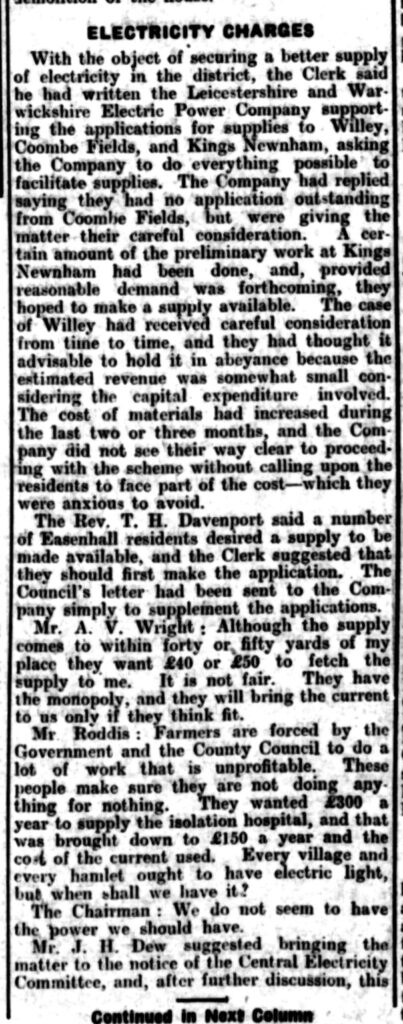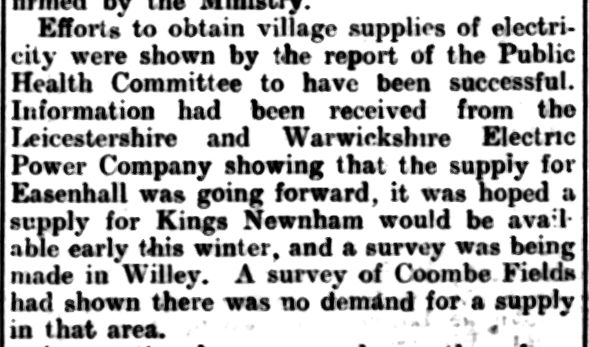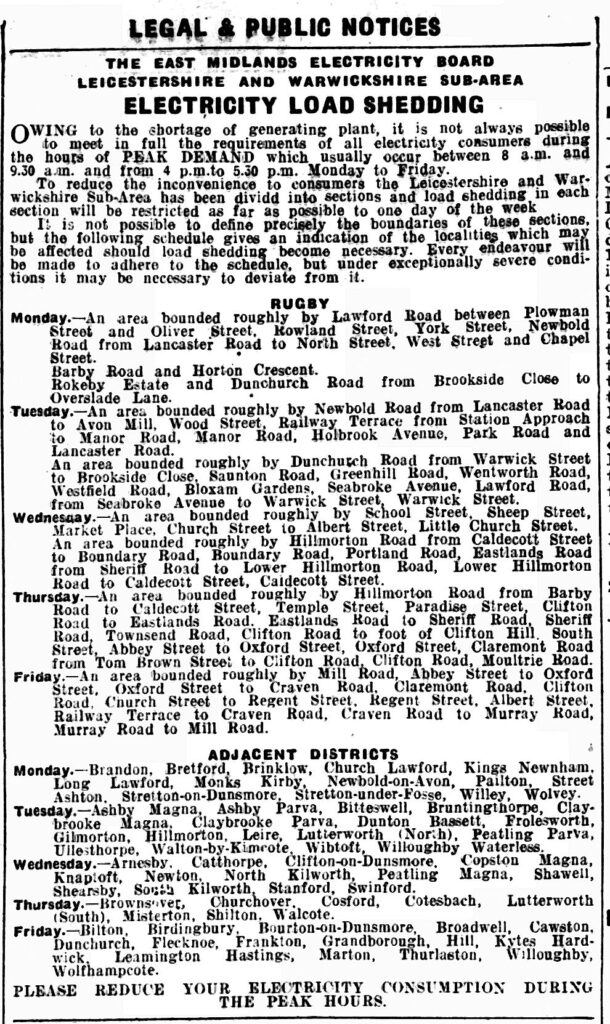Ron Hence referenced the lack of various utilities in Church Lawford in the inter-war period in his recollections for the village magazine:
What was our village like in the pre-war period from the late 20s to 1939? It was much smaller than it is today, and almost totally involved in agriculture and country pursuits. The village was surrounded by working farms, all using horses as the main source of power for farm implements and all employing local men, (augmented by women and children at peak harvest time), because of the considerable amounts of manual labour required in those days. There was no piped water supply to the village, no gas, no electricity, no sewage disposal, no drainage, no refuse collection and only a few manually operated telephones for the privileged., (the parson, the blacksmith, the postmaster and most farmers all connected to the Wolston operator and used simple numbers like Wolston 56 for Limestone Hall). There was no TV, of course and only cats’ whisker radios using earphones.
A similar reflection was captured by Keith Sinfield for his village history article about that period:
In the 1930s the Council built the terraced houses on the east side of King’s Newnham Road. Conditions, though, were spartan: a), no internal running water (water was drawn from shared stand-pipes in the back gardens), b), outside loos (the contents of which were periodically dug into the garden) and c). no electricity. Violet Mallinson (1926-2019) shared her memories of village life, having had the distinction of living in one of these houses, continuously, almost from the time they were built. She spent her childhood there, and continued to live in the same house to bring up her own family. Over the years the necessary mod-cons have, of course, been incorporated — all of which were witnessed by Vi during her 80 plus years of occupancy.
The Council Houses built in Middle Lane after the war, in what was originally known as Pleasant View, had more in the way of services, as did the Airey Houses which came a few years later. The various cottages in the village had differing experiences, with water originally from a well or from the village pump in the street. Certain cottages were condemned and subject to a clearance order due to the lack of facilities (including lack of light or sanitation).
The Village Magazine back in 1980 detailed how one of the old Village Pumps had come to present-day attention with the discovery of the old well in Church Road that fed the pump. Various villagers then worked to make the scene safe, but also to preserve that pump, which can still be seen. The report carried information that the pump had been the source of drinking water, whereas water for other purposes was fetched from the river.
A more detailed review of what became available when, and which locations were able to access them will be carried out with collaboration from other villagers and ex-villagers and their family records. The areas covered will include
- Water Supply
- Mains sewage
- Mains electricity
- Gas Supply
- refuse collection
- Home heating and lighting – coal / paraffin etc
- phones / telegrams
- Street Lighting




